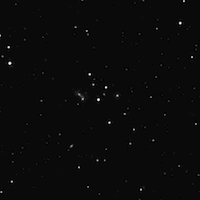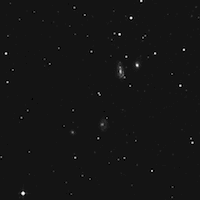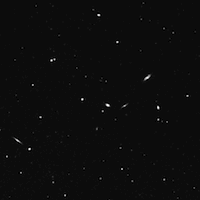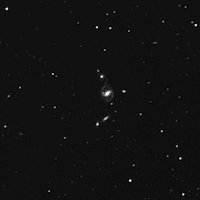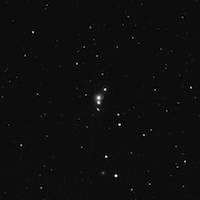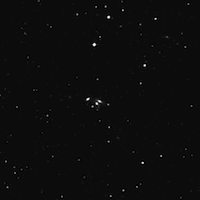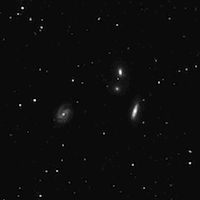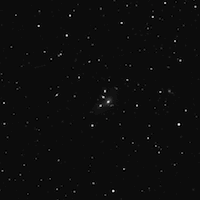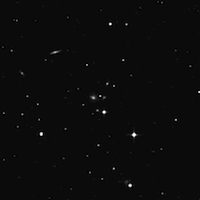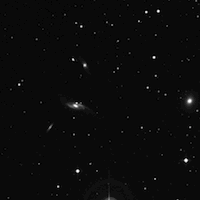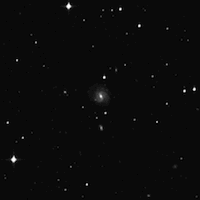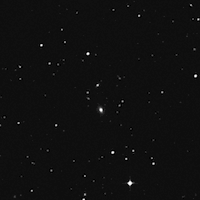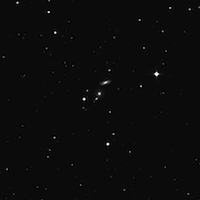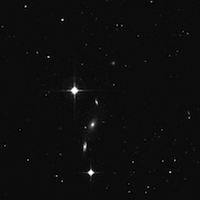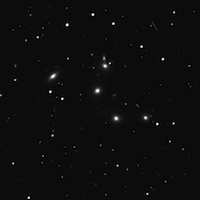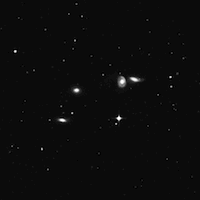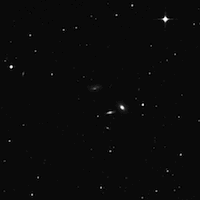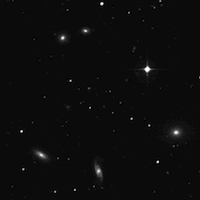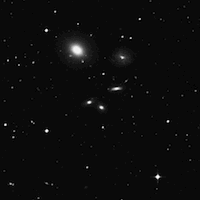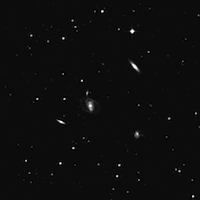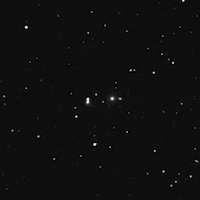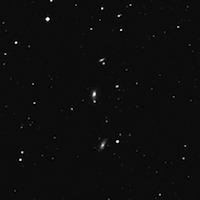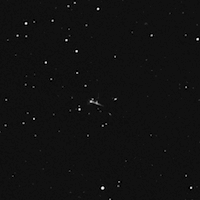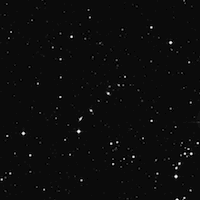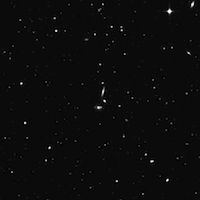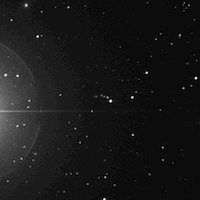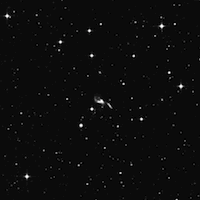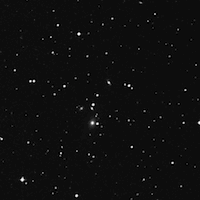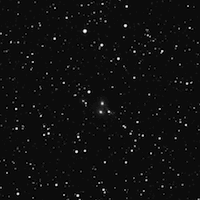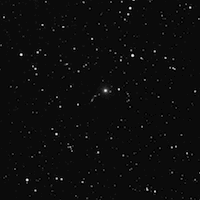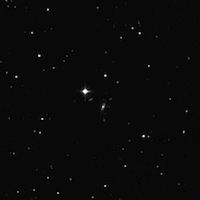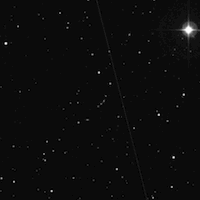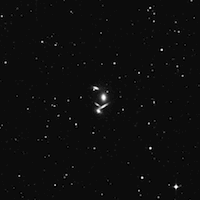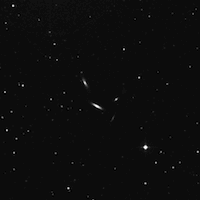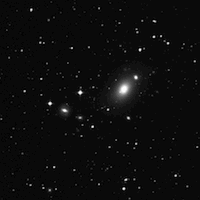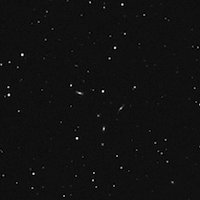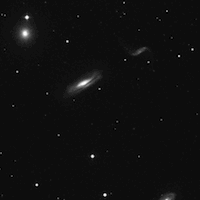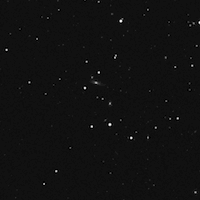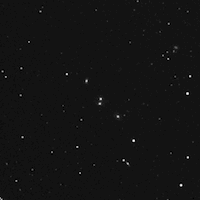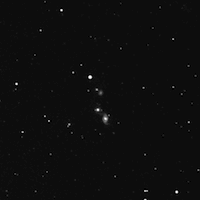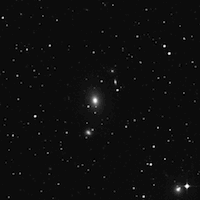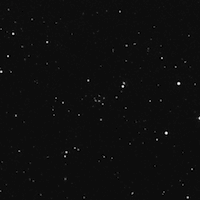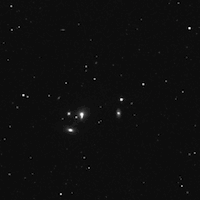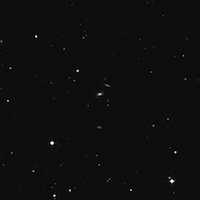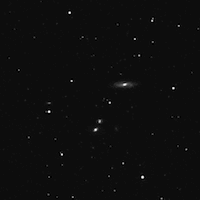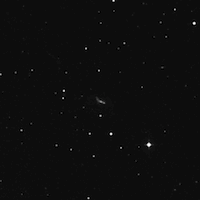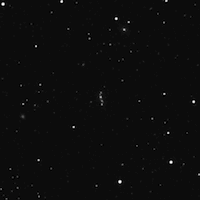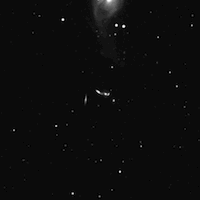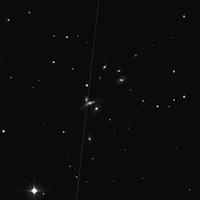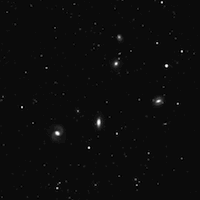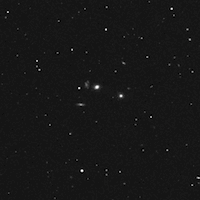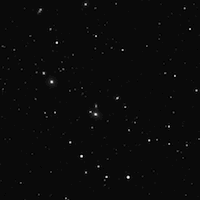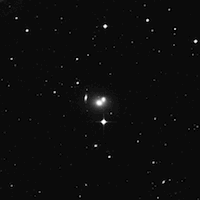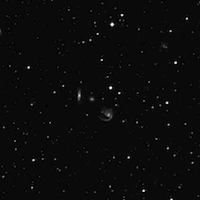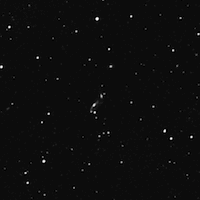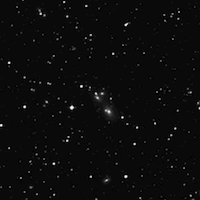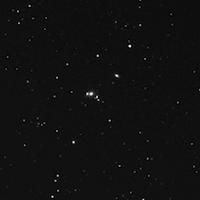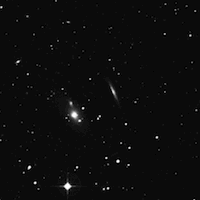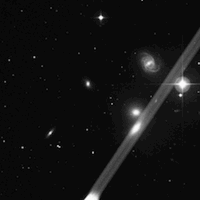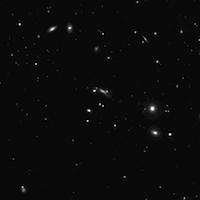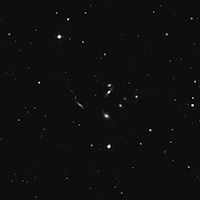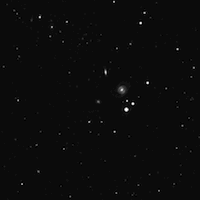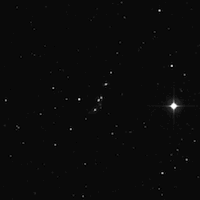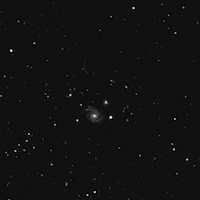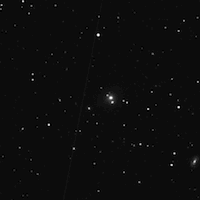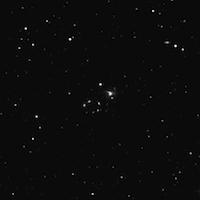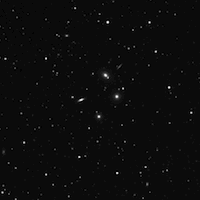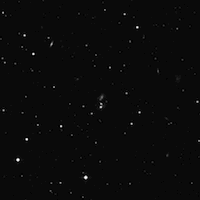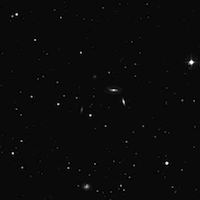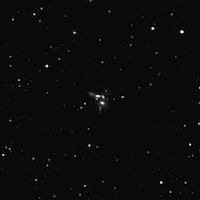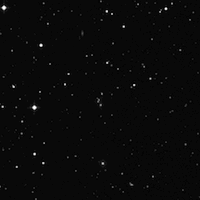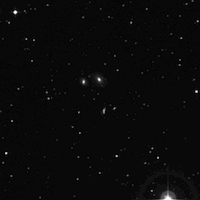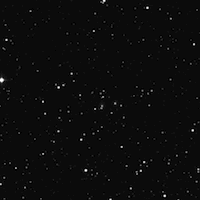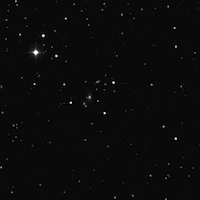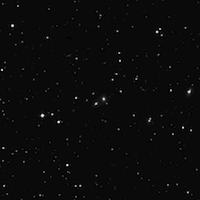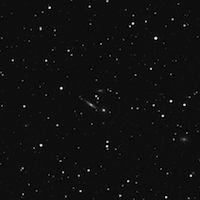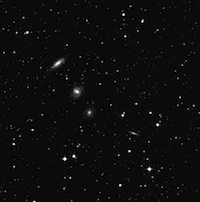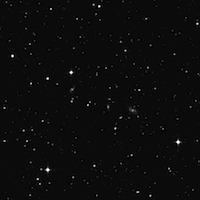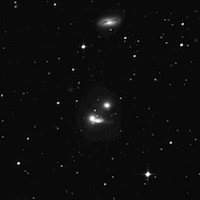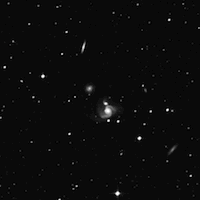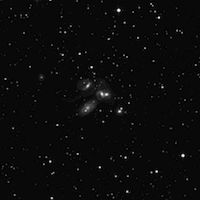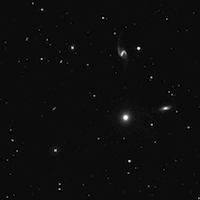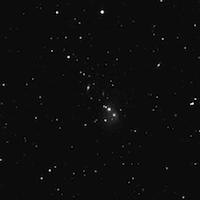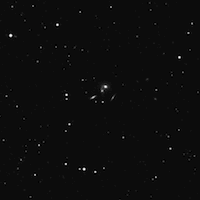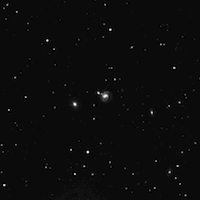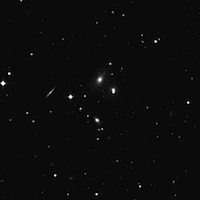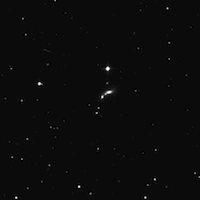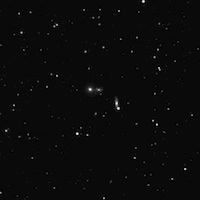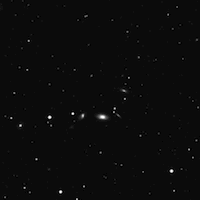The Hickson Compact Groups
Jason Kendall, William Paterson University
kendallj {AT} wpunj.edu
All images below come from the Digitized Sky Survey , produced at the Space Telescope Science Institute
Useful links: National Optical Astronomy Observatory Gallery, HubbleSite and Australian Astronomical Observatory Gallery.
Click on an image to get it in a high-resolution format.
The paper we're looking at is the original article where Paul Hickson created a small catalog of groups of galaxies. His goal was to understand the nature of galaxy interactions on the shapes and types of galaxies. He searched by eye the "red" images from the Palomar Sky Survey, so that's what you have on the web page below. At the time he did this, it was not digitized. The search would be much easier today. You'll use the list he create in his paper to answer the questions and find images. You'll also be going to his paper, too. He classified the groups into six categories. "S" if the brightest galaxy in the group is a spiral, and "E" if the brightest galaxy is an elliptical. He then put them into further subcategories. "I" if the brightest one was at least a magnitude brighter than all the others, "II" if it was between a half magnitude and a full magnitude brighter than the second brightest, and "III" if the brightest one was almost the same brightness as the second-brightest galaxy. For example, HCG 1 is an SIII, and HCG 9 is an EI.
You'll need to look at this article to help you with this activity. Hickson Paper.
All of the images below are centered on the group. Click on the image for a full-size version. You'll take the full-size version and look mostly at the center of the image. For nearby groups, it'll take up a big part of the image. For distant groups, they'll look like a tight group of fuzzy patches.
| HCG 1 NED | HCG 2 NED | HCG 3 NED | HCG 4 NED |
| HCG 5 | HCG 6 | HCG 7 | HCG 8 |
| HCG 9 | HCG 10 | HCG 11 | HCG 12 |
| HCG 13 | HCG 14 | HCG 15 | HCG 16 |
| HCG 17 | HCG 18 | HCG 19 | HCG 20 |
| HCG 21 | HCG 22 | HCG 23 | HCG 24 |
| HCG 25 | HCG 26 | HCG 27 | HCG 28 |
| HCG 29 | HCG 30 | HCG 31 | HCG 32 |
| HCG 33 | HCG 34 | HCG 35 | HCG 36 |
| HCG 37 | HCG 38 | HCG 39 | HCG 40 |
| HCG 41 | HCG 42 | HCG 43 | HCG 44 |
| HCG 45 | HCG 46 | HCG 47 | HCG 48 |
| HCG 49 | HCG 50 | HCG 51 | HCG 52 |
| HCG 53 | HCG 54 | HCG 55 | HCG 56 |
| HCG 57 | HCG 58 | HCG 59 | HCG 60 |
| HCG 61 | HCG 62 | HCG 63 | HCG 64 |
| HCG 65 | HCG 66 | HCG 67 | HCG 68 |
| HCG 69 | HCG 70 | HCG 71 | HCG 72 |
| HCG 73 | HCG 74 | HCG 75 | HCG 76 |
| HCG 77 | HCG 78 | HCG 79 | HCG 80 |
| HCG 81 | HCG 82 | HCG 83 | HCG 84 |
| HCG 85 | HCG 86 | HCG 87 | HCG 88 |
| HCG 89 | HCG 90 | HCG 91 | HCG 92 |
| HCG 93 | HCG 94 | HCG 95 | HCG 96 |
| HCG 97 | HCG 98 | HCG 99 | HCG 100 |
Acknowledgements for the images used in this exercise
The Digitized Sky Survey was produced at the Space Telescope Science Institute under U.S. Government grant NAG W-2166. The images of these surveys are based on photographic data obtained using the Oschin Schmidt Telescope on Palomar Mountain and the UK Schmidt Telescope. The plates were processed into the present compressed digital form with the permission of these institutions.
The Second Palomar Observatory Sky Survey (POSS-II) was made by the California Institute of Technology with funds from the National Science Foundation, the National Aeronautics and Space Administration, the National Geographic Society, the Sloan Foundation, the Samuel Oschin Foundation, and the Eastman Kodak Corporation. The Oschin Schmidt Telescope is operated by the California Institute of Technology and Palomar Observatory.
The UK Schmidt Telescope was operated by the Royal Observatory Edinburgh, with funding from the UK Science and Engineering Research Council (later the UK Particle Physics and Astronomy Research Council ), until 1988 June, and thereafter by the Anglo-Australian Observatory. The blue plates of the southern Sky Atlas and its Equatorial Extension (together known as the SERC-J), the near-IR plates (SERC-I), as well as the Equatorial Red (ER), and the Second Epoch [red] Survey (SES) were all taken with the UK Schmidt telescope at the AAO.
All images labelled with NOAO are courtesy of National Optical Astronomy Observatory/Association of Universities for Research in Astronomy/National Science Foundation.
All images labelled with AAO copyrighted by the Australian Astronomical Observatory, with photographs by David Malin.
